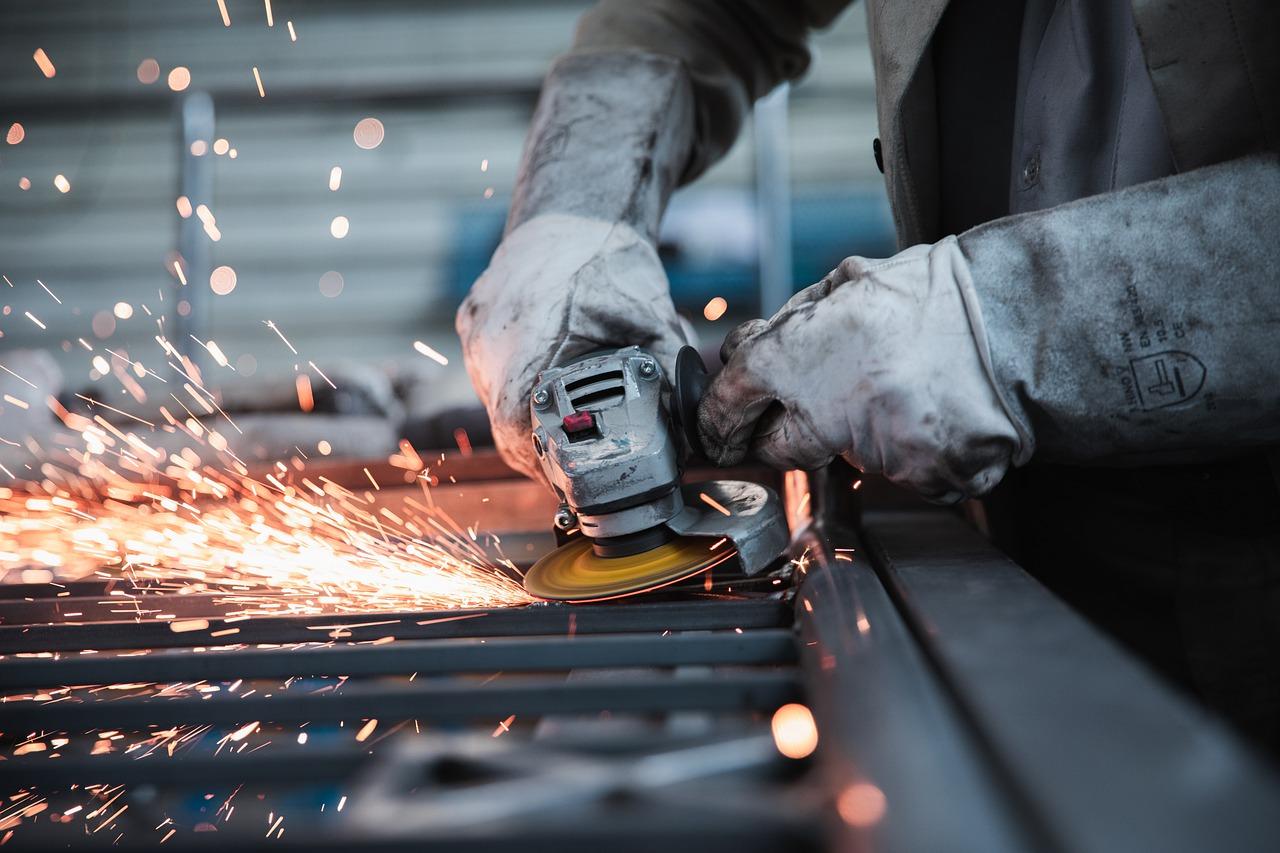In 2020, there will be more than 4,000 fatal workplace injuries in the US. These can occur from workplace complications such as improper clean-up leading to blood infection, exposure to harmful chemicals, or lack of precaution while working with power tools. No matter the sector, from a doctor to a construction worker, each professional has a right to a healthy, appropriate and safe work environment.
Therefore, your job as an industrial hygienist is essential in maintaining an optimal working environment with minimum risks, leading to maximum efficiency. But how do you identify these shortcomings, what preventive measures can you suggest, and how does your intervention help? Here is what you need to know about becoming an industrial hygienist:
- Understand Your Role
Your role as an industrial hygienist is to make any work environment safe and provide the necessary measures to subside any health hazards. So, when you walk in for an inspection, you need to anticipate that every work environment has a fraction of danger. This allows you to recognize possible health hazards and gauge how dangerous they are. Once you understand what you are dealing with, you must recommend necessary precautionary measures.
The work you will do is highly multifaceted. So you need the right educational qualifications to shape you into a professional. Once you acquire your bachelor’s, get an online masters in industrial hygiene to fast track your career, know how to use high-end tools, and generate lucrative reports which address health hazards.
- Know How to Conduct A Workplace Assessment
As a professional industrialist, you will be sent to different sectors to judge how dangerous the work environment is. These can be retail clinics, construction sites, and chemical factories. Your role is to analyze the workplace and approve it for operations. You are looking for pollutants such as loud noise exceeding 70 DBS and crossing over 120 DBS, which can cause hearing loss.
Determine how physically stressful and dangerous the site is, such as having wood chippers or chairs with no lumbar support. Use a sensor to check the indoor air quality and ventilation points. Label all hazard points such as corrosive chemicals, slippery staircases, or lack of protective gear.
Some work sites are also radioactive, but that is safe if the Geiger counter shows a reading of 0.05 to 0.10 micro-Sieverts/hour (uSv/hr). The final step is identifying all possible pathogens like bacteria in the water or even looking for respiratory infections like the Corona.
- Know The Science. Use research-backed principles to identify hazards. This can include taking a sample of chemicals and inserting it into a gas chromatograph connected to a mass spectrometer to detect the possible harmful chemical mixed in the containers.
- Analyze Data. Once you have a list of all the workplace hazards, you need to compile a report stating what these are and how they will impact workers.
- Read Toxicology Reports. You need to know how to read workers’ urine and blood samples to identify if they are ill, abuse substances, and what chemicals are in their blood.
- Communicate Remedial Measures. Once you map out areas of improvement, you need to let the manager know what needs immediate addressing. You can also reach out to workers and inform them what they can do while working to avoid risks. If an industry discards your warning, you can charge them with an OSHA violation.
- Recognize Common Workplace Hazards
The core of your profession is acknowledging workplace hazards. This is only possible when you know what categories to look for. Here are some common types of industrial hazards you need to be aware of:
- Airborne Hazards
Airborne hazards are any gas, vapor, or particulate in nature that can get inhaled. Consequently, these airborne pollutants can irritate the nasopharyngeal passage and inflame the lungs. These are as follows:
- Dust: Happens as a result of crushing, grinding, burning material like rock, wood, and metal
- Fumes: These result from vapor released from chemicals and condenses into harmful particles
- Mists: The vaporized material is a liquid droplet suspended in the air.
- Aerosol: Liquid particles that can enter the lungs
- Fibers: Solid particles that are small in diameter and easy to inhale, like asbestos. Their size ranges from 10 to 100 micrometers.
- Chemical Hazards
Chemical hazards are any substance that can cause harm if inhaled, touched, or ingested. These are present in any state, such as solids, liquids, gases, mists, fumes, and vapors. As an industrial hygienist, you need to check the concentration level of these chemicals and deduce the worker’s risk. Common examples include acids, disinfectants, heavy metals like mercury, pesticides, and paints. High levels of exposure can lead to blood poisoning, nausea, and even nervous system disorders.
- Biological Hazards
Biological hazards include bacteria, fungi, and other living organisms, breaking through the skin, inhaling, or getting ingested. Once these pathogens enter the body, they can cause chronic infections such as pneumonia, bronchitis, HIV, and even cancer. The most common workplaces for biological hazards are hospitals and the food processing industries.
- Ergonomic Hazards
Ergonomic hazards require a range of movement and motions that puts the body under stress. Examples include using the hammer, lifting heavy objects with no support, or using a jackhammer which can injure the whole body from intense vibrations.
- Physical Hazards
Physical hazards result from exposure to strong physical stimulants like noise, bright lights, extreme temperatures, radiation, and vibrations. These hazards can cause workers to become sick, injure themselves or develop disorders in the long run.
- Provide Reliable Control Measures
When you have mapped out the workplace hazards and identified sources of risks, you also need to recommend measures to mitigate these pitfalls. These go as follows:
- Stocking Up On Protective Gear. You need to encourage every sector to have the appropriate protective gear. Doctors may need biohazard coveralls, gloves, goggles, and even access to sanitation facilities.
Construction workers need protective headgear, knee pads, elbow protection, ear muffs, and eye protection. Depending on the sector and the intensity of the task, every worker should have access to protection and cleaning facilities after a day’s work. Hygiene also keeps workers safe from contracting infectious diseases and transmitting them to their families.
- Provide Manual On Machine Safety. Machines are operated a certain way. A worker cannot simply turn it on and off without ensuring all the gears, levers, and components are working in order. Manuals can inform a worker on how to use dangerous machines, how long it should be operated, moving it through rough terrains, and safely switching it off and putting it away for a day.
The manual should include machine maintenance such as sharpening blades safely, checking for loose or damaged parts, and discarding the equipment once it hits saturation.
- Create Labels. Creating labels ensures that workers know what they’re dealing with and don’t accidentally injure themselves while doing their job. Chemical hazards should get labeled with warning signs such as corrosiveness. Steep staircases, dangerous machines, and shelves where equipment gets stored should all have labels. Dark working environments should have neon labels to inform workers to watch their steps. Exit signs also need to get labeled, and workers need to know where the nearest exit is.
- Encouraging Healthy Dietary Habits. No matter what industry a worker hails from, they should have healthy dietary habits. You may need to take the time out and research the calorie intake each sector needs. Heavy lifters like construction site workers need more than 4,000 calories per day. At the same time, mild to moderate jobs like office workers need 2,500 calories a day. The work site should have a clean space for food consumption and access to cleaning facilities. Doctors should get advised to change their scrubs before they sit for a meal. You should implement strict regulations against showing up to work drunk, using tobacco, or even consuming narcotics.
- Make Workspaces More Aerated. Ventilation is an essential aspect of a healthy work environment. Chemical industries should have a proper HVAC system that filters fumes before releasing them into the atmosphere. Workers should have access to windows, open spaces to stretch and breathe. No work should get conducted in a closed environment for more than a few hours a day.
- Guide Workers to Get Monthly Check-Ups. You should take it up with the managerial board to encourage workers to get monthly check-ups. A general physician can carry out all the necessary tests such as blood work, checking the nervous system, eye test, and a complete physical evaluation to ensure the employee is healthy. This prevents diseases from settling in and helps employees bypass life-threatening ailments like cancer in its early stages.
Final Thoughts
Industrial hygiene is an essential field that ensures the lives and safety of workers operating in different sectors. Your job is to evaluate each profession’s risks and establish remedial methods to prevent the situation from escalating. Workplace injuries, casualties, and deaths may increase exponentially without your intervention. This shatters the economic backbone of any industry, but it also shuts accessibility to essential supplies.
Therefore, to be a professional industrial hygienist, get your master’s degree, start assessing different workplace cultures, identify the hazards and connect employees to preventive measures. Keep the services industry alive and well by taking care of every laborer.



